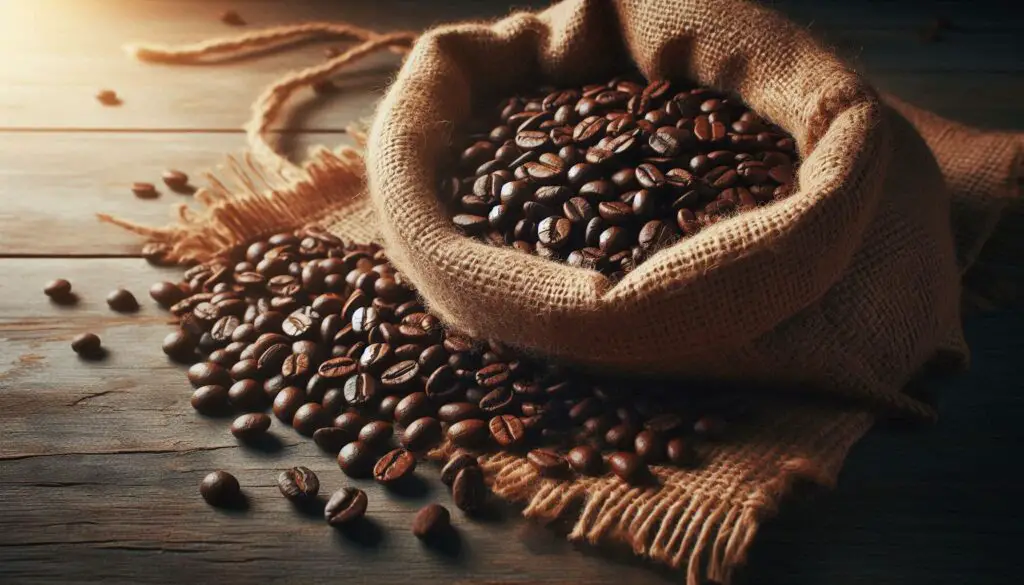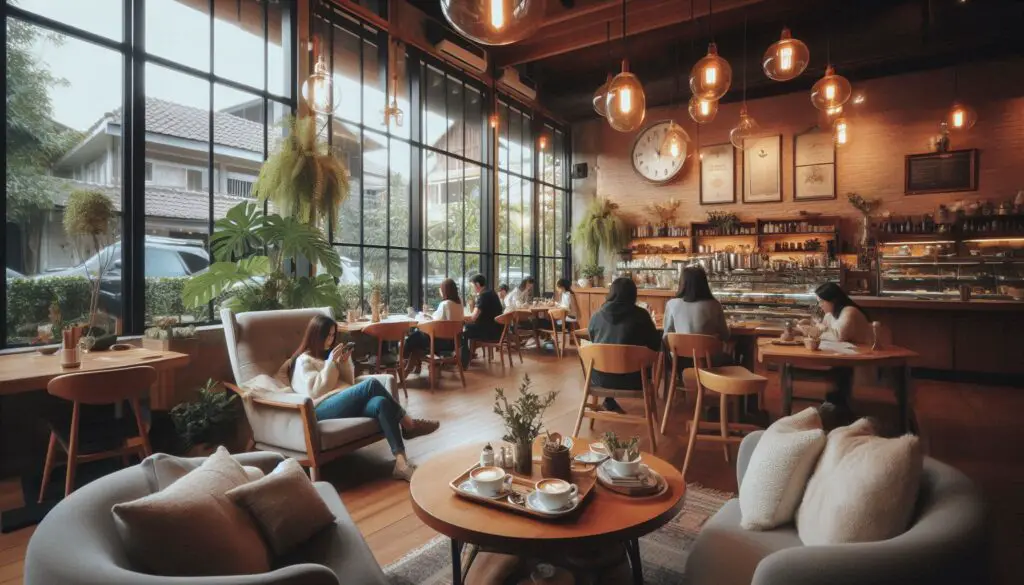Introduction
Espresso, the quintessential coffee experience, holds a world of secrets. Baristas prefer its rich flavour and aromatic essence; espresso has become a staple in coffee culture worldwide. However, achieving that perfect shot involves more than meets the eye. In this article, we’ll uncover ten espresso secrets baristas don’t want you to know, empowering you to elevate your coffee game at home.
Espresso is not just a beverage; it’s a craft that combines art and science. Crafting the perfect espresso shot begins well before brewing, involving a precise approach to each step. Every detail matters, from selecting the right beans to mastering the extraction process. The casual coffee drinker must often appreciate the complexity and precision required to be an excellent espresso.
The popularity of espresso has surged over the years, with countless cafes and coffee shops making it their signature offering. Despite its widespread availability, many espresso lovers are unaware of the intricacies of creating that ideal shot. Baristas, who have spent years honing their skills, often keep these secrets to themselves, maintaining an aura of mystery around the process.
Learning these secrets can be a game-changer for the home barista. It can transform your daily coffee routine from a simple task into an enjoyable and rewarding ritual. Imagine replicating the quality of your favourite cafe’s espresso in the comfort of your home. “With the right understanding of the subject matter and application of effective methodologies, you can not only accomplish the goal above but also surpass it with further achievements.”
This article aims to demystify espresso by sharing insights that professional baristas use to perfect their craft. We’ll delve into the importance of using fresh beans, the impact of grind size, the role of water quality, and much more. Each section will provide practical tips and advice for your espresso-making process.
“Whether you are just starting your journey into the world of espresso making and want to enhance your foundational skills, or you are a seasoned enthusiast aiming to perfect your craft, this all-encompassing guide is designed to provide you with the essential knowledge and techniques required to elevate your espresso-making abilities to the next level. So, grab your favourite mug, prepare to take notes, and get ready to uncover the secrets that will transform your espresso experience.
It’s crucial to prioritize freshness when making espresso, as it forms the foundation of a great cup. After roasting coffee beans, they lose their flavour rather quickly. Use the beans within two to four weeks of the roasting date for the best results. The beans’ freshness significantly impacts the overall quality of your espresso, as older, stale beans can lead to a lacklustre and uninspiring taste.

How to Identify Fresh Beans
Identifying fresh beans can be tricky, but these tips can help. First, check the roast date on the packaging. Avoid beans without a roast date, as they are likely past their prime. Fresh beans should have a rich aroma and an oily sheen. If the beans smell stale or are dry and brittle, they are no longer fresh.
Storing Your Coffee Beans
Store your coffee beans in a cool, airtight container. A dark place is essential to keep them fresh. Please avoid storing them in the refrigerator or freezer, as the moisture can cause damage. Fluctuating temperatures can harm their flavour and quality. Always opt for a dry, excellent spot away from direct sunlight and strong odours. Keeping your beans in an airtight container helps avoid contact with air, as it may lead to deterioration. Instead, use a vacuum-sealed container or a canister with a one-way valve to keep your beans fresh longer.
The size of your coffee grind can significantly impact the flavour of your brew. Make or break your espresso shot. Espresso requires a fine grind, but the size The outcome may differ based on the specifications of your equipment and your individual preferences. A proper grind ensures that water flows through the coffee at the correct rate, extracting the perfect balance of flavours.
Adjusting Your Grinder
Dialing in your grinder is a skill every espresso lover should master. Start with a fine grind and make minor adjustments until you find the sweet spot. If the coffee grind needs to be fine enough, the resulting espresso will lack strength and may be too watery; if it’s too fine, it will be bitter and over-extracted. Experimenting with grind size can help you achieve the perfect shot.
Choosing the Right Grinder
Investing in a high-quality grinder can significantly impact your espresso experience. Burr grinders are preferred over blade grinders because they produce a more consistent grind size. Look for a grinder with precise settings to quickly adjust the grind size to suit your needs.
The Role of Water Quality
Water quality is an often-overlooked factor that significantly affects espresso taste. Your water should be impurities-free and have the right mineral content to enhance flavour extraction. The presence of hard water can lead to the accumulation of scale in your appliance., while soft water may not extract flavours efficiently.
DIY Water Testing
You can test your water quality at home with simple kits available online. These kits measure hardness, pH, and other factors. Once you know your water’s characteristics, you can adjust it to suit your espresso needs. Remember, using a water filter or bottled water can make your coffee taste better.
Ideal Water Composition
The ideal water for brewing espresso should have a balanced mineral content. Too many minerals can taste harsh, while too few can make a flat, uninteresting flavour. Aim for water with a hardness of around 70-100 ppm (parts per million) and a pH level 7.0.
Perfecting the Tamping Technique
Proper tamping ensures even extraction, a vital element of a perfect espresso shot. Tamping involves pressing the coffee grounds evenly into the portafilter. Inconsistent pressure can lead to channelling, where water flows through some parts of the coffee puck faster than others, resulting in an uneven extraction.
Tamping Tools Every Barista Loves
Investing in these tools can improve the quality of your espresso. A calibrated tamper ensures consistent pressure, while a levelling tool evenly distributes the coffee grounds before tamping, helping you achieve the perfect tamp every time.
Tamping Tips for Consistency
- Use a smooth and steady motion.
- Apply even pressure across the entire puck and avoid twisting the tamper, which can create uneven density in the coffee grounds.
- Practice regularly to develop a feel for the right amount of pressure.
- Pre-Infusion Techniques
Pre-infusion can significantly enhance the flavours extracted from your coffee grounds. This technique involves wetting the coffee puck with a small amount of water before extraction. Pre-infusion helps to saturate the grounds evenly, leading to a more balanced and flavorful shot.

Manual vs. Automatic Pre-Infusion
Both manual and automatic pre-infusion have their advantages. Manual pre-infusion allows more control over the process, while automatic pre-infusion is more consistent and convenient. Experiment with both methods to see which works best for you.
Implementing Pre-Infusion
If your machine doesn’t have a built-in pre-infusion feature, you can mimic the process manually. Start the extraction and let a small amount of water pass through the puck for about 5-10 seconds, then pause for a few seconds before resuming the total extraction. This manual method can help you achieve results similar to automatic pre-infusion.
Consistent temperature is crucial for extracting the perfect espresso. The best brewing temperature range is between 195°F – 205°F (90°C – 96°C). Temperature fluctuations can lead to under- or over-extraction, affecting the taste of your espresso.
Using a PID Controller
A PID controller can help maintain precise temperature control. These gadgets oversee and regulate the temperature of your espresso machine, ensuring consistent results. Installing a PID controller can be a game-changer for serious home baristas.
Monitoring Temperature Stability
Even with a PID controller, monitoring your machine’s temperature stability is essential. Fluctuations can still occur, especially in less expensive models. Use a thermometer to check the water temperature at the group head and make adjustments as needed to ensure consistency.
Espresso Machine Maintenance
Regular upkeep of your espresso maker is crucial to achieve top-notch performance. Over time, coffee oils and mineral deposits can build up, affecting the taste and functionality of your machine. Keeping your machine clean ensures that it continues to produce high-quality espresso.
DIY Maintenance Tips
You don’t need to be an expert to keep your machine in top shape. Daily tasks include wiping down the machine and purging the steam wand. It would help if you backflushed the group head with a cleaning solution. Monthly, descale the machine to remove mineral buildup. Following these routines can extend the life of your machine and keep your espresso tasting great.
Common Maintenance Mistakes
Avoid common maintenance mistakes such as using harsh chemicals, neglecting the drip tray, or forgetting to clean the steam wand after each use. Please maintain and take care of your machine. Properly to avoid expensive repairs and keep it running at its peak performance.
Choosing the Right Beans
When it comes to making espresso, it’s essential to understand that different varieties of coffee beans can substantially impact the taste and overall quality of the resulting shot. Therefore, it’s crucial to carefully select the beans you use, as this choice can make a significant difference in the flavour and overall experience of your espresso. Espresso beans are typically roasted darker to bring out rich, bold flavours that stand up to the intense brewing process.
Single-Origin vs. Blends
Both single-origin beans and blends have their unique advantages. Single-origin beans offer distinct flavours from specific regions, while blends combine beans from different areas to create a balanced and complex profile. Experiment with both to find your favourite taste.
Finding Quality Beans
Look for reputable roasters who provide detailed information about their beans, including origin, roast date, and tasting notes. Supporting small, local roasters can often yield fresher and higher-quality beans than mass-produced options found in supermarkets.
Understanding Extraction
Understanding the extraction process is critical to mastering espresso. Extraction refers to how flavours are pulled from the coffee grounds during brewing. Proper extraction produces a balanced shot with a harmonious blend of sweet, sour, and bitter notes.
Troubleshooting Extraction Issues
These tips can help you troubleshoot common extraction problems. If your espresso is too sour, it is under-extracted; try a finer grind or a higher temperature. It is over-extracted if it is too bitter; try a coarser grind or lower temperature. Adjusting variables like grind size, dose, and tamping can help you achieve the perfect extraction.
Monitoring Extraction Time
Keep an eye on the extraction time, typically between 25 and 30 seconds. Too fast or slow extraction times can indicate grind size, dose, or tamping issues. Utilize a timer to maintain uniformity and make modifications as necessary to achieve the intended extraction.
The Art of Latte Art
Latte art adds a personal touch to your espresso drinks, but it’s more than just decoration. Creating beautiful designs requires skill and practice, but mastering this art can enhance your coffee experience.
Tips for Beginners
Starting with simple designs can help you build confidence and skill. Begin with basic patterns like hearts and leaves, gradually progressing to more complex designs. Use whole milk for better foam, and practice your pouring technique. Avoid common mistakes like over-frothing the milk or pouring too quickly.

Advanced Latte Art Techniques
Once you’ve mastered the basics, experiment with advanced techniques such as free-pour designs and etching. Free-pour designs involve intricate patterns without tools, while etching uses a thin tool to draw detailed images in the milk foam. With practice, you can make beautiful designs in your coffee.
Bringing It All Together: Your Path to Perfect Espresso
Mastering these espresso secrets can transform your coffee experience from ordinary to extraordinary. By focusing on freshness, grind size, water quality, tamping, pre-infusion, temperature control, maintenance, bean selection, extraction, and latte art, you’ll be well on your way to crafting exceptional espresso shots at home. Experiment with various methods, and enjoy the journey to improve your espresso-making skills by embracing the process.
FAQ
Q: How do I know if my espresso beans are still fresh?
A: Fresh espresso beans will have a strong aroma and an oily sheen. Look for a roast date on the packaging, and use the beans within two to four weeks of roasting to enjoy the best flavour.
Q: Why is grind size so essential for espresso?
A: Grind size affects the rate of extraction. A fine grind allows water to flow through the coffee grounds at the correct rate, extracting the perfect balance of flavours. Too coarse or fine a grind can result in under-extraction or over-extraction, respectively.
Q: What type of water should I use for brewing espresso?
A: Use filtered water with the proper mineral content. Do not use distilled water, as it lacks the minerals required to extract flavour. Testing your water quality can help you make necessary adjustments.
Q: What is the suggested schedule for cleaning my espresso machine?
A: Clean your machine daily by wiping it down and purging the steam wand. Backflush the group head weekly with a cleaning solution and descale the machine monthly to remove mineral buildup.
Q: Can coffee beans be used to make espresso coffee?
A: Any coffee beans can be used, although technically, it is essential to note that. Espresso beans are typically roasted darker to enhance their rich, bold flavours. Experiment with single-origin beans and blends to find your preferred taste.
By following these guidelines and tips, you can unlock the full potential of your espresso-making skills and enjoy barista-quality coffee at home.




